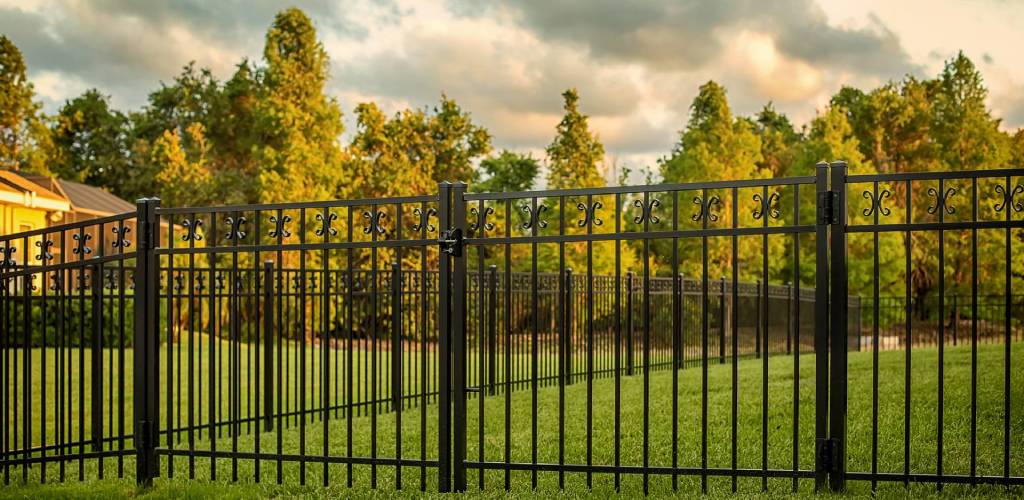All Categories
Featured

When considering mounting a fencing on your residential property, among the most important steps is to recognize whether you need a license. Fencing installments commonly need a license to make certain that the structure conforms with regional zoning laws, building codes, and safety and security criteria. The certain authorizations needed can differ depending upon your location, the kind of fence you intend to install, and the elevation or positioning of the fencing. Here's a guide to assist you browse the procedure of getting a fencing license and guarantee that your setup is convenient and legal.
Why You Need a Permit for a Fencing Setup. The license procedure helps regional authorities verify that your fencing does not interfere with web traffic presence, regard your residential or commercial property lines, or breach elevation constraints. Mounting a fence without a license can result in fines, elimination of the fencing, or delays in building and construction, so it's important to check whether an authorization is needed before beginning your task.
Sorts Of Authorizations You Might Require. There are a couple of common sorts of authorizations you might require for a fence setup:
Building Authorization. A building license is one of the most typical authorization required for fence installations. This authorization makes sure that the fence meets safety criteria and is built according to neighborhood building ordinance. A structure license is usually needed if the fencing exceeds a specific height (typically 6 feet), is made of particular products, or lies near a public pathway or roadway.
Zoning License. A zoning authorization may be called for to verify that your fencing adheres to local zoning laws. Zoning policies can determine where a fencing can be positioned on your residential or commercial property, exactly how high it can be, and whether it is allowed specific locations (such as along building lines or ahead yards) As an example, some districts have laws restricting the height of fence the front lawn to guarantee presence for pedestrians and vehicle drivers.

Setback Authorization. You might require an obstacle authorization if you are constructing a fencing near your residential or commercial property line or close to a road. A problem describes the distance a structure, consisting of fencings, must be from the residential property line. Trouble laws differ by place, and ensuring that your fencing is put properly can protect against problems with next-door neighbors and stay clear of infractions.
House Owner Organization (HOA) Approval. If you live in a neighborhood governed by a Home owner's Organization (HOA), you might need approval from them in enhancement to local licenses. HOA regulations often cover the kind of products, elevation, design, and shade of fences. Also if your city government does not call for a license, your HOA might still have certain guidelines that require to be followed.
How to Use for a Fencing License. To get a fence authorization, you'll need to call your regional structure department or preparation workplace. The application procedure usually involves completing a form, paying a cost, and submitting a site plan of your residential property that shows the suggested location of the fencing. You may additionally require to consist of information about the materials, elevation, and design of the fencing.
In some cases, a neighborhood authorities may require to check your home before accepting the permit. As soon as the permit is provided, you will certainly be authorized to proceed with your fence installation.
When Is an Authorization Not Needed? In particular situations, a permit may not be required. These circumstances can consist of:
Reduced Height Fences: In lots of locations, fencings that are listed below a particular height (commonly 3 to 4 feet) may not need a permit, specifically if they are positioned in the backyard or various other non-visible areas.
Fencing Replacement: If you're changing an existing fence with the very same elevation and product, some areas might not require a new license.
Non-Obtrusive Fencings: Short-term or ornamental fencings, such as those made use of for horticulture or landscaping purposes, might not need licenses as long as they are not long-term and reduced.
Nevertheless, it is essential to consult your neighborhood zoning office or structure division, as guidelines can vary by territory.
Repercussions of Not Acquiring a Permit. Falling short to obtain the required authorizations can cause considerable effects. These include fines, required elimination of the fence, or even hold-ups in construction. Additionally, if your fencing does not satisfy local regulations, you might deal with legal issues with next-door neighbors or neighborhood authorities.

Verdict. By ensuring that you comply with regional policies and obtain the essential permits, you can ensure and prevent expensive errors that your fence is legitimately certified. Check with your regional building division, HOA, and zoning office to establish what authorizations are needed for your certain fence job.
Latest Posts
Recognizing When Your Car Needs Expert Car Repair at Montclare Auto Repair
Published May 15, 25
1 min read
Design Remarkable Gatherings at Deauville Inn: Opt for Six Elegant Event Spaces
Published May 15, 25
2 min read
Explore Your Partner at WyHy Saves You Money on Financing and Accounts
Published May 15, 25
1 min read
More
Latest Posts
Recognizing When Your Car Needs Expert Car Repair at Montclare Auto Repair
Published May 15, 25
1 min read
Design Remarkable Gatherings at Deauville Inn: Opt for Six Elegant Event Spaces
Published May 15, 25
2 min read
Explore Your Partner at WyHy Saves You Money on Financing and Accounts
Published May 15, 25
1 min read